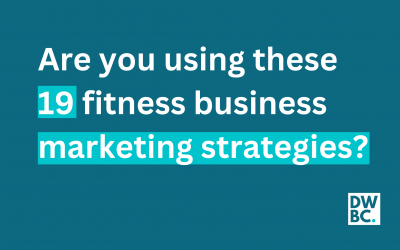Summary: Tracking your true hourly rate is one of the most important KPIs for Fitness Professionals. By doing this, you’re able to measure the true value of your time and maximise your financial efficiency and productivity.
We didn’t know it at the time, but it was the first business Key Performance Indicator (KPI) we ever had.
It’s a KPI we tracked during that first school holidays job – flipping burgers in Maccas, working retail in the local shopping center, or umpiring junior sport on a Sunday morning.
The humble ‘hourly rate’ was the most basic of all KPIs – how much you get paid for every hour of work you do.
Unfortunately, many Fitness Business Owners seem to have lost sight of the importance of this simple KPI. The ‘hourly rate’ has been forgotten and replaced by things like lead numbers, conversions, average attendance rates, retention and attrition rates, average lifetime value of clients, and more. But maybe it’s time to come back to basics and remember the value of your time.
How much are you working and how much are you getting paid to do that work? I’m not asking for your hourly rate as a Personal Trainer, because we all know that’s not your hourly rate. Sure, you’re getting paid for that hour, but what about the other work you’ve done to earn the right to charge that amount?
For example, you might earn $120 for an hour of training a client. But that hour of work isn’t your hourly rate – it’s just a billable hour. Consider the time spent programming for the client, doing admin work, communicating with the client, traveling to and from the gym, marketing your business, and worrying about how to get more clients. The list goes on and on, and we haven’t even mentioned business overheads, tax, GST, and superannuation. Suddenly, your $120/hour rate begins to look less impressive.
It’s no surprise that burnout rates are so high in the industry. If you’re wondering when all your hard work will finally pay off, you’re not alone. You’re stuck in a cycle of not being able to capitalise on your effort. If something doesn’t change, that effort will never be rewarded.
Just like your client who’s chasing a goal, you need to be able to measure your hourly rate on your way to realising your effort. Because if you don’t, you’ll never know if you’re getting closer or if something needs to change. The equation is pretty simple. Start with the total amount you earn every week and divide that by the number of hours you spend doing anything and everything related to your business.
For example, if you earn $1500 a week from working 15 billable hours, your gross hourly rate is not $130. When you calculate the time you spend on anything and everything related to your business, you might find that you’re working 25 hours instead of 15. In this case, your gross hourly rate drops to $60.
When you factor in taxes and superannuation, the hourly rate drops even further. And once you factor in the other costs associated with running a business, like marketing and rent, the hourly rate can drop well below $40.
Don’t hide from these figures. Embrace them and use them as a measure of your business success. It is actually possible to earn a lot of money in just 20 hours a week, and it leaves you free to pursue multiple income streams.
Instead of chasing leads, conversions, and revenue, start chasing your hourly rate. Track the changes in this KPI over time and work out how to increase this figure by working less, earning more, or both.
You’ll build not only a more financially successful business, but a happier business too.
Your hourly rate might just be the best measure we have of your business success.





